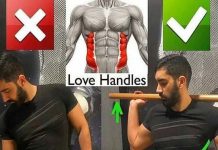- Advertisement -
Upper Chest Smith Machine Press
Upper Chest Smith Machine Press – this basic exercise, which is an analogue of the classic bench press, its action is directed to the development of the pectoral muscle. The technique of execution is analogous to the work with free weights

[wp_ad_camp_1]
[wp_ad_camp_5]
The advantages of doing Upper Chest Smith Machine Press
- The simulator allows you to perform the exercise without a safety partner.
- Use of limit weights without the possibility of injury.
- In Smith’s simulator, you can perform severe negative repetitions without disturbing technique and harm to ligaments and joints.
- Due to the fact that the bar moves along the guides, the beginning athletes are given an excellent opportunity to work out the correct technique for performing the classic bench press.
- Athletes who are injured, can continue to train without burdening additional injured ligaments and joints, purposefully working out only the necessary muscle group.
Simulator Smith provides an opportunity to pump up a beautiful chest and develop the absolute strength of an athlete without the additional risk of injury.

[wp_ad_camp_1]
The technique of performing Upper Chest Smith Machine Press
- The first thing to do is to adjust the location of the bench under the simulator. Use a small angle, which should be between 20 and 30 degrees. This is necessary to better accentuate the load on the upper chest and relieve the triceps and delt work.
- The bench under the simulator should be set so that when the barbell is lowered to the end point of the negative phase, it touches directly the lower part of the chest.
- Adopt the starting position and remove the bar from the latches of the simulator. Keep your legs relaxed: this is necessary to not shift the load from the chest to the auxiliary muscle groups.
[wp_ad_camp_4]
- The back should touch the bench with the entire plane, do not use additional deflections, keep the shoulder blades in the closed position until the end of the exercise.
- The width of the grip select so that when lowering the bar to the lower point of the forearm were parallel at an angle of 90 degrees. This position of the hands will ensure the correct transfer of the load to the working muscle group during the exercise.
- Keep the hands in a strictly fixed position and do not bend them, otherwise you may get injured.
- Take a deep breath and smoothly execute the negative phase of the movement. When the neck touches the lower cut of the breast, make a two second break to maximize the stretching of the muscle fibers.
- Don’t tear your head from the bench to prevent injury and focus as much as possible on the development of the pectoral muscle.
- Exhale sharply and return the controlled barbell to the starting position. Use the technique described above, follow the set number of sets and repetitions.

-Advertisement -















































